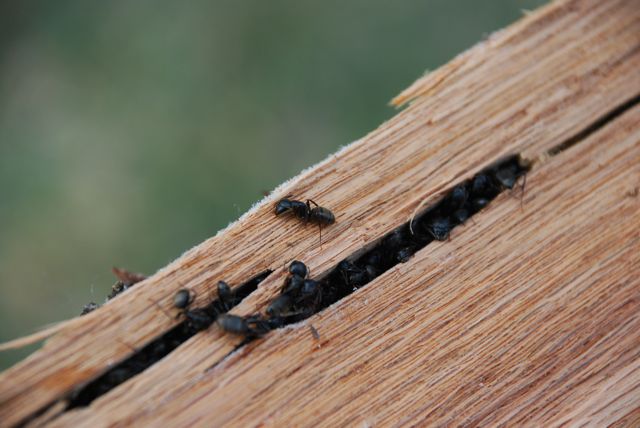On a recent trip to the Hassayampa River Preserve, we ran across a number of harvester ant mounds, particularly those of Pogonomyrmex barbatus.
I examined the refuse piles, or middens, to see what the ants had been gathering.

Pogonomyrmex barbatus typically gather seeds and their middens reflect that.

The larger ovoid seeds caught my eye, because I knew what those were from.
The Hassayampa preserve has numerous mesquite trees of various kinds.

The trees were covered with seed pods.

More mesquite pods covered the ground under the trees.

If you look closely, the pods consist of strings of seeds embedded in a starchy, sweet material that is sometimes ground up and used for flour. Having tried grinding up the pods before, I knew they are fairly tough.

Somehow the harvester ants were finding partially processed seeds with the starchy pod removed.

It seemed doubtful they were processing the pods themselves, at least I saw no evidence they were when I looked at the piles of pods under trees. Time to look around some more.
That’s when I found a big. smelly clue.

Ah, now that makes more sense.

My best guess is that the scat comes from a coyote. In the Sonoran Desert coyotes consume a lot of mesquite pods. Apparently they digest the pods but leave the seeds “behind.”

Have you ever seen harvester ants scavenging seeds from scat? Do you know what kind?


























